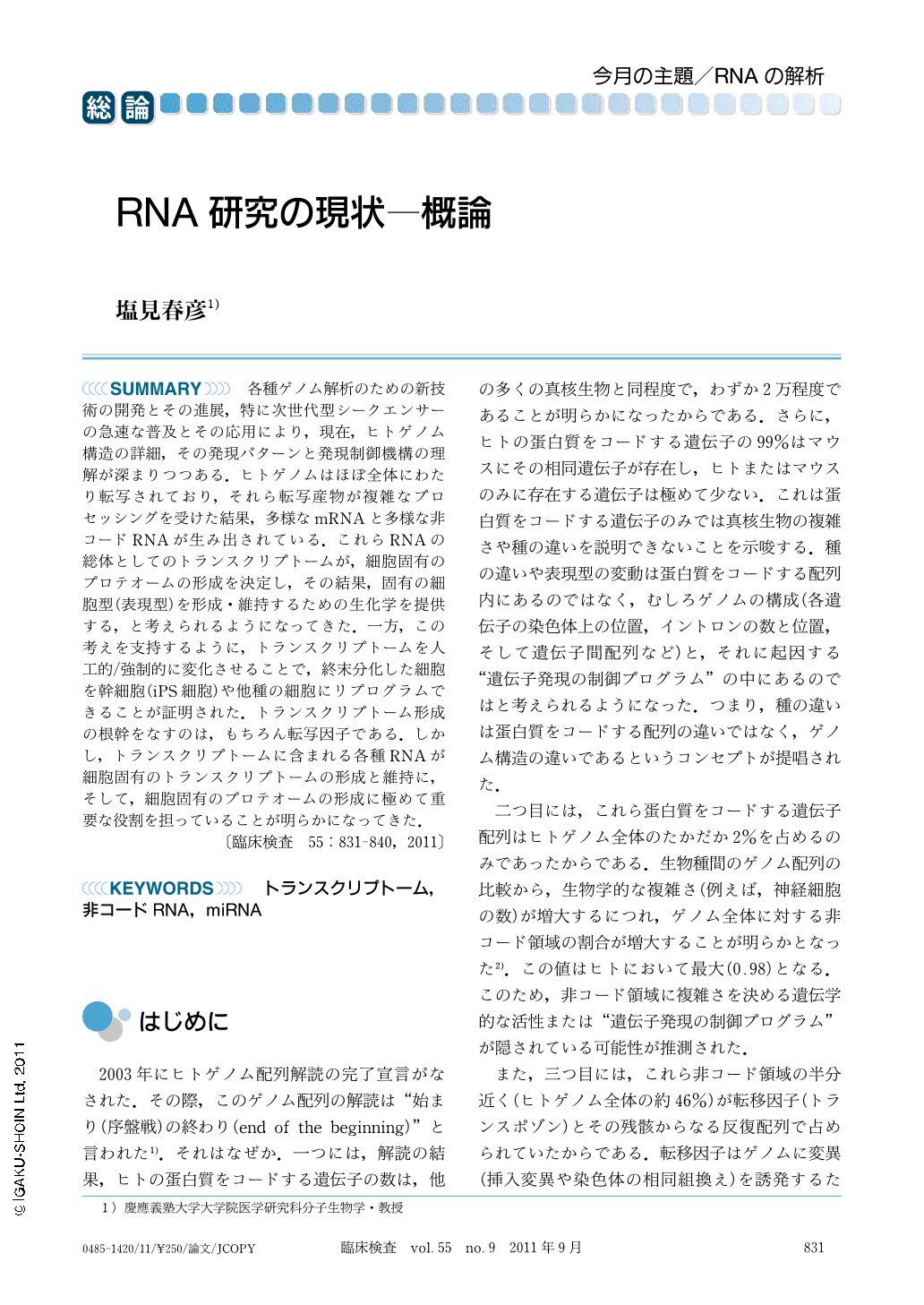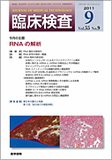Japanese
English
- 有料閲覧
- Abstract 文献概要
- 1ページ目 Look Inside
- 参考文献 Reference
各種ゲノム解析のための新技術の開発とその進展,特に次世代型シークエンサーの急速な普及とその応用により,現在,ヒトゲノム構造の詳細,その発現パターンと発現制御機構の理解が深まりつつある.ヒトゲノムはほぼ全体にわたり転写されており,それら転写産物が複雑なプロセッシングを受けた結果,多様なmRNAと多様な非コードRNAが生み出されている.これらRNAの総体としてのトランスクリプトームが,細胞固有のプロテオームの形成を決定し,その結果,固有の細胞型(表現型)を形成・維持するための生化学を提供する,と考えられるようになってきた.一方,この考えを支持するように,トランスクリプトームを人工的/強制的に変化させることで,終末分化した細胞を幹細胞(iPS細胞)や他種の細胞にリプログラムできることが証明された.トランスクリプトーム形成の根幹をなすのは,もちろん転写因子である.しかし,トランスクリプトームに含まれる各種RNAが細胞固有のトランスクリプトームの形成と維持に,そして,細胞固有のプロテオームの形成に極めて重要な役割を担っていることが明らかになってきた.
Genetic output was thought to be entirely or almost entirely transacted by proteins and therefore it was believed that there was good correlation between morphological, developmental and physiological complexity and the number and diversity of protein-coding genes. However, recent studies have confirmed that the number of protein-coding genes does not seem to fluctuate among eukaryotic species and therefore they cannot readily be distinguished in this way. Only ~2% of the human genome corresponds to protein-coding genes while most of the genome does not appear to have protein-coding capacity. It is now clear that up to 90% of the human genome has been transcribed, generating an extraordinary range of RNAs with non coding capacity. Intriguingly, there seems to be a linear relationship between the complexity of an organism and the number of non-coding RNAs produced. These observations have led to the new concept : that lying behind the origin of complexity of higher organisms is the dramatic expansion of the non-protein-coding RNA inventory, including the absolute number of siRNAs, miRNAs, and long non-coding RNAs rather than an increase in the protein-encoding inventory.

Copyright © 2011, Igaku-Shoin Ltd. All rights reserved.


